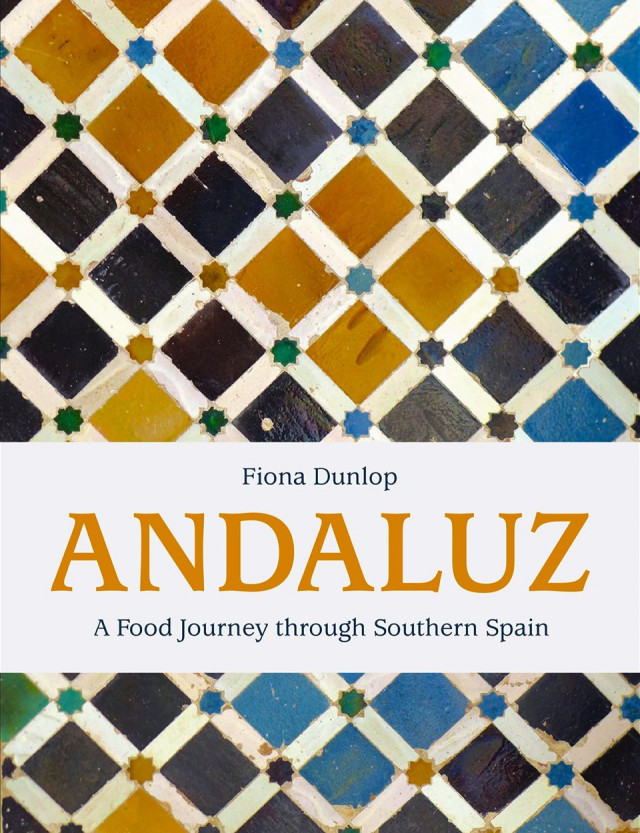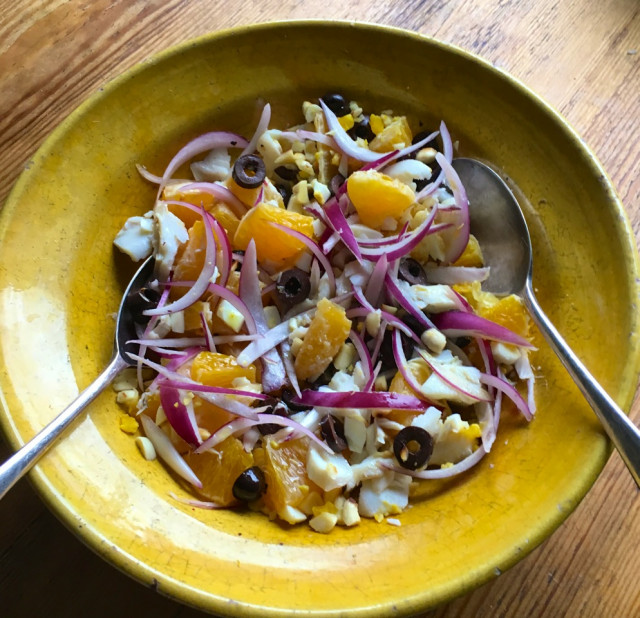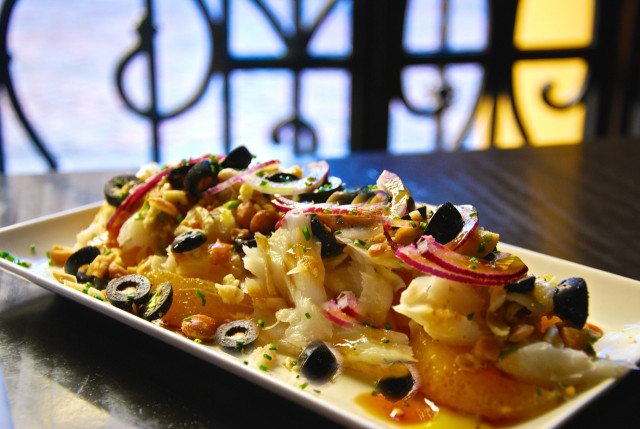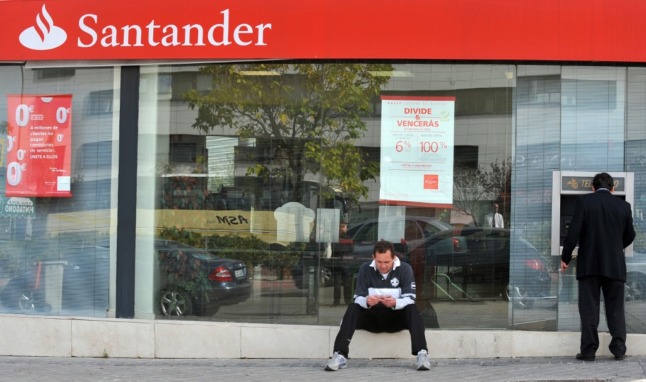Over a period of about 40 years my fascination for Andalucía has ripened into an undying passion. The more I discover and the more layers I unpeel from this bewitching land, the more I love its people, landscapes and history, and the more I taste, the more I realize how much Andalucía still owes to the Moorish cooking-pot. The result is my latest book, Andaluz – a Food Journey through Southern Spain, in which 21 cooks present over 100 recipes with a distinct Moorish accent.
Back in the late 1970s when I first landed in the region, it really did seem like the moon – gastronomically speaking. Today’s trio of top products – extra virgin olive oil, jamón ibérico and sherry – were unknown in villages of the sierra, while those ubiquitous polytunnels for growing year-round vegetables had yet to be invented. Life beyond the cities and embryonic costas was disturbingly poor due to two very tight yokes: wealthy estate-owners on the one hand, and Franco on the other.
This extract from my book describes my first experience when I arrived in Sorbas (Almería province), a village surrounded by spectacular karst formations and semi-desert.
It was late autumn, meaning that the annual matanza (slaughter) was kicking off. Every morning, agonizing squeals rang out as the fattened pigs met their makers, hardly romantic, but at that stage I had no idea about the resultant joys of jamón, salchichón or chorizo. While monsieur (my French painter-boyfriend) wielded his paint-brushes or cogitated in a hammock on the roof terrace, I would set off with my camera to try and record this timeless place. Inquisitive faces framed by black headscarves peered out from tiny square windows but it was the monumental karst landscape sliced by canyons and speckled with sculptural cacti that electrified me most.
One evening we were invited to dinner by the Sorbas butcher in his shop along with similar village dignitaries. Here, following a spread of tasty (piggy) victuals, we were rather formally presented with a huge pan filled with… goat’s head soup. Little did they know about the Rolling Stones album, released a few years earlier – or perhaps they did? When encouraged to eat the goat’s eyes, said to be the greatest delicacy, I demurred, but the cheeks were a treat.
Gastronomy in those days was a mere afterthought, as rural Spain, in particular impoverished Andalucía, had hardly advanced since the hardships of the Civil War. Sorbas’ two grocery shops were woefully basic and I was shocked to find no butter, a product of the greener north that was alien to Andalucía. Instead there was a tasteless spread called Tulipan, which still exists today… Even vegetables were sparse in that desert area, so low-grade pasta, pork chops and tinned sardines became our culinary mainstay – hardly gastronomic. A special treat came when the postman cooked a pan of snails for us…
In a nutshell, it was as if those eight centuries of Moorish rule, which brought an agricultural revolution in the form of water-wheels, irrigation channels and terracing as well as rice, chickpeas, artichokes, eggplants, almonds, bitter oranges, pomegranates, dates, saffron, sugar-cane, figs, apricots and more, had never existed. Yet today, researching my book by talking to chefs and market traders as well as diving into an online version of a 13th century Al-Andalus cookbook, I have discovered recipes that have endured and even long-forgotten ingredients like couscous that are making a comeback.
While top Andalucian restaurants shoot up the Michelin-star ladder, what is clear is the huge culinary chasm between innovative young chefs in cities like Seville and Málaga, and those of small towns and the countryside, where old habits die hard. This is where I will always go to indulge in earthy, unpretentious, comfort food, where ingredients are close to their source and dishes light years away from molecules, foams and the like. Andalucía my friend, you are an eternal star!
Andaluz – a Food Journey through Southern Spain is available on Amazon worldwide. Fiona Dunlop leads a foodie tour, Secret Andalucía, with Toma & Coe; the next is in June 2019.

The author has chosen one of her favourite recipes from the book to share with The Local readers.
RECIPE: Bodegas Mezquita’s Cod, olive and orange salad (Remojón)

Córdoba, the city where Al-Andalus kicked off in the 8th century, offers the greatest range of ‘caliphate’ dishes. This classic appetizer (or lunch main course) is refreshing, textural and perfect during the winter orange season. Bodegas Mezquita’s twist comes from the intense Pedro Ximénez dessert wine dressing, as well as slow cooking the cod to make a velvety confit.. If you lack time, just poach the cod in lightly salted water or milk, gently simmering for 5 to 7 minutes depending on thickness.
Serves 4
Ingredients
1 large, juicy navel orange, peeled
7 1/2 oz (210 g) cod fillet, about 1 inch (3 cm) thick
1 1/2 cups (350 ml) extra virgin olive oil, plus more if needed
2 cloves garlic, finely chopped
2 heaped tablespoons toasted almonds, roughly chopped
1/2 hardboiled egg, finely chopped
1 red onion, thinly sliced into half rings
8 pitted black olives, cut into rings
salt and white pepper
3 teaspoons PX reduction, or simply use Pedro Ximénez sherry
snipped chives to garnish (optional)
Preparation
Divide the orange into segments and remove all seeds, inner skin, and pith.
In a small saucepan, submerge the cod in the olive oil. Place over low heat and slowly cook the cod, keeping the temperature as close to 212°F (100°) as possible (use a kitchen thermometer if you have one). It takes about 50 minutes.
Turn the fillets over halfway through.
Once cooked, skim off the white layer that has formed on the surface of the oil (in fact, the fish gelatin), then
remove the fillets with a slotted spoon. Allow to cool.
Mix the garlic, almonds, and hardboiled egg.
To serve, arrange the orange pieces on a platter, followed by chunks of the cod, onion, olives, and almond-egg mixture. Season with salt and pepper.
Mix the PX sherry with 4 tablespoons of olive oil and drizzle over the salad.
Enjoy!






 Please whitelist us to continue reading.
Please whitelist us to continue reading.